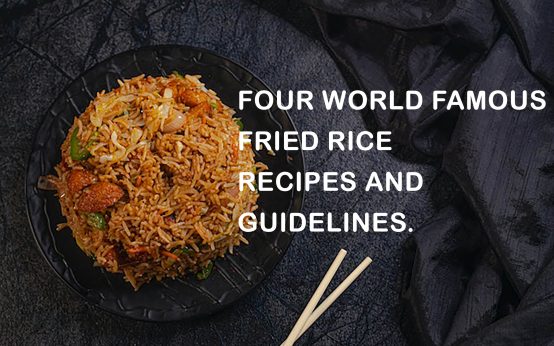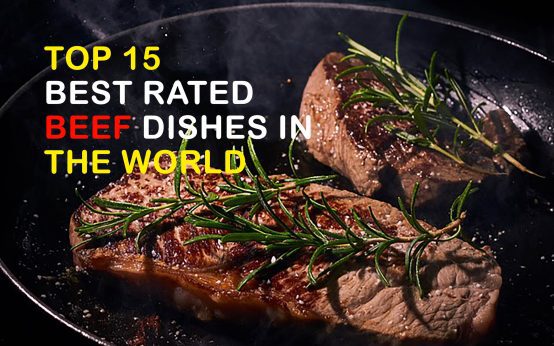Biryani is one of the most popular Indian dishes all over the world. It is a food with a massive portion, including many ingredients. It will take time to make Biryani, but the divine taste will make you forget the time and effort it will take you to prepare. Biryani is one of the dishes present on every special occasion in Indian festivals. The origin of Biryani is Persia, but it has more popularity in India than in Persia. This dish has been prepared as a rustic rice and meat dish in Persia. There are many types of Biryanis which are influenced by Muslim foods. According to the ingredients used to prepare the word, there are variations of Biryanis.
How to make a Biryani?
There are main ingredients that we need to prepare Biryani; instead of those ingredients, other additional ingredients are added to make different types of Biryanis. The main ingredients we need to prepare Biryani are long-grained rice (Basmathi), marinade, meat and spices. According to the area that the dish makes, the types of proteins differ. If Biryani is cooked in inland regions, you can use chicken, mutton, beef and goat. You can use fish and shrimp if Biryani is cooked in the coastal area. The Followings are the steps to make a Chicken Biryani.
Ingredients.
Basmati Rice, Butter, finely sliced onions, bay leaves, cinnamon sticks, turmeric, cardamom pods, chicken, balti curry paste, and chicken stock are the main ingredients you need to add more flavour and make the food aromatic. You should put coriander and garnish with almonds.

Step one –
Soak the basmati rice that you need to prepare the dish. According to the number of people, the measure of the rice differs. After soaking, wash the rice in cold water until the water gets clear.
Step Two –
Heat the butter in a saucepan, add the sliced onions, bay leaves, cardamom pods and cinnamon sticks, and cook them for 10 minutes maximum.
Step Three –
Put some turmeric powder in the saucepan and add the chicken breasts. It is good if you cut the chicken into large chunks. Then add some curry powder. Cook the mixture until it gets aromatic.
Step Four –
Take the rice bowl, stir it with raisins, and pour the chicken stock.
Step Five –
Tightly close the lid of the rice pan and boil the rice for another 5 minutes in the lowest heat.
Step Six –
Turn off the cooker and leave the pan for 10 minutes. Stir the rice well, mix the coriander powder, and garnish the dish with almonds.
Types of Biryanis.
Kachchi Biryani.
Though the Biryani recipe is relatively standard for all the types, there are slight variations in them to make each other differ from one another. When cooking, the Kachchi Biryani is a Biryani type that is uncooked, but marinated chicken is layered on it. The rice is cooked inside a handi or earthen pot with multiple layers of rice. The dish is cooked under steam, and the rice pot is sealed with wheat dough.

Calcutta Biryani.
Calcutta is the most simple and mild version of Biryani that you will find in all the Biryani types. The Calcutta biryani is cooked mildly and lightly with more spices. This is also a biryani type that is cooked without meat. Potatoes and boiled eggs are the ingredients that are used instead of beef. The use of spices to prepare this dish has given an iconic and own style to its taste. The plate is seasoned with rose water and saffron to add colour and flavour.
Malabar Biryani.
Malabar Biryani has a special place in the community of Malabar Muslims. It is said that the origin of Malabar biryani is Kerala. A smaller-grain thin rice called Khyma rice is used to prepare Malabar Biryani. Because of this different type of rice, this Biryani differs from the other biryanis. The dish is cooked inside a pot covered with charcoal, and more spices are added to the rice.

Ambur Biryani.
Ambur Biryani is mainly distributed in Tamil Nadu among the Muslim community. Ambur Biryani is a part of the cuisines in Ambur and Vaniyambadi, which are two neighbouring cities. Therefore this dish is also called by the name Vaniyambadi Biryani. The iconic dishes served with Ambur Biryani are Raita and sour eggplant curry. It is a tradition that the Biryani is only complete with these two dishes.
Bhatkali Biryani.
The origin of Bhatakali Biryani is Bhatakal in Karnataka.The Bhatakali Biryani is an essential part of Navatathi cuisine. Unlike the other biryanis, the Bhatakli biryani rice is white with laces of orange from the masalas added to it. The Bhatakali Biryani has got its unique taste from the garlic, onion, spices, chillies, curry leaves and the masala mixture.
Sindhi Biryani.
The origin of Sindhi Biryani is from Sindh in Pakistan. The Sindhi Biryani is flavoured In the Pakistani version. Sindhi Biryani is a combination of many aromatic spices and flavours. In the recipe of Sindhi biryani, vegetables are also included. Sindhi Biryani is a Pakistan representing dish International as well.

Mughlai Biriyani.
The Mughlai Biryani became popular during the ruling period of the Mughals in India. The Mughlai Biryani originated from the Mughal kitchens. The Mughlai biryani is a representative dish of Mughal culture. At present, Mughlai, Biriyani is most commonly found in Delhi.

Lucknowi Biryani.
Lucknowi Biryani is not that spicy but has a royal taste. The recipe is light and easy, which makes the food mild and more delicate for the stomach. Lucknow biryani and Calcutta biryani have similarities except for the use of potatoes. The Lucknowi Biryani is rich in flavours and aroma.

Hyderabadi Biryani.
Hydrabadi Biryani is also a common biryani type among the people. When we hear the word Biryani, the first thing that comes to mind is “Hydrabadi Biryani”.When cooking the Hydrabadi Biryani, goat meat is most often used. The dish is cooked with meat and the alternative layer of rice cooked on a flame. The Hydrabadi Biryani differs from the other Biryanis as it is spicier than other Biryanis.

Tehri.
Tehri is a dish that cooks in the same recipe as classical Biryani except for adding meat. Tehri is a vegetarian meal made as a Hindu for Muslim Nawabs. Instead of adding meat in Tehri cooking, rice is added to potatoes. Tehri was a popular dish during the period of world war II as the price of the heart was high, and potatoes were cheaper. If you visit, you can see Tehri as a typical street food in Kashmir.




 Four World Famous Fried Rice Recipes and Guidelines.
Four World Famous Fried Rice Recipes and Guidelines.  How to make Grandma’s Perfect Bread at Home.
How to make Grandma’s Perfect Bread at Home.  Top 15 Best Rated Beef Dishes in the World.
Top 15 Best Rated Beef Dishes in the World.  Which Burgers are the Best in the World?
Which Burgers are the Best in the World?  Did You Want to Know Top 10 Chocolate Varieties in the World.
Did You Want to Know Top 10 Chocolate Varieties in the World.